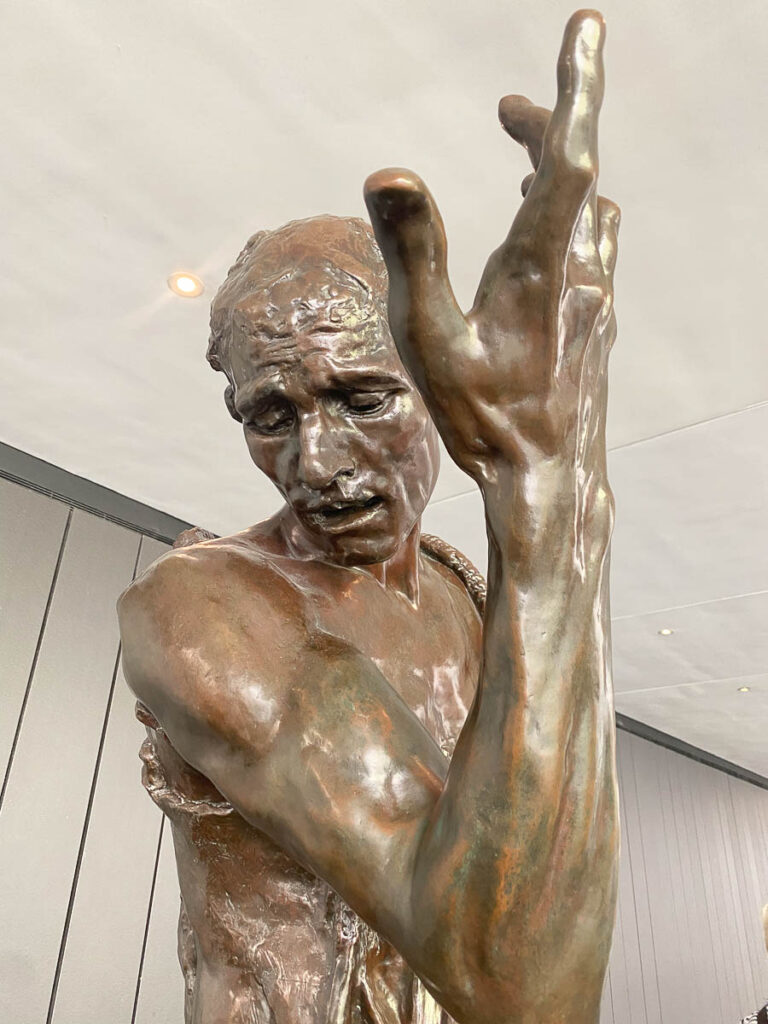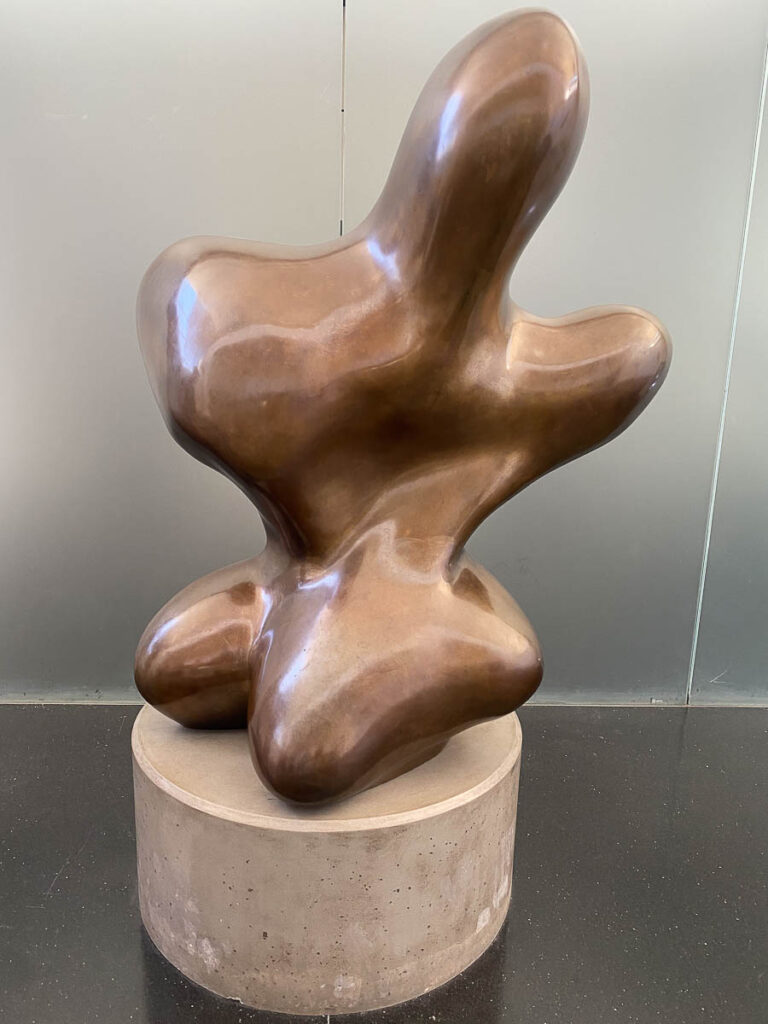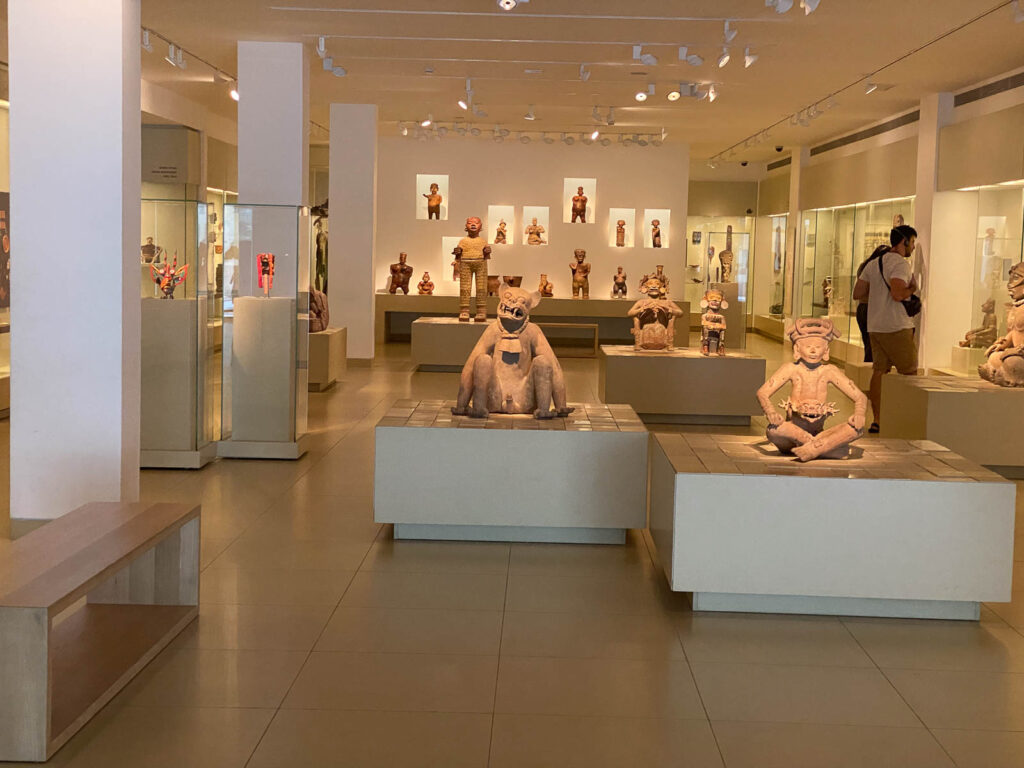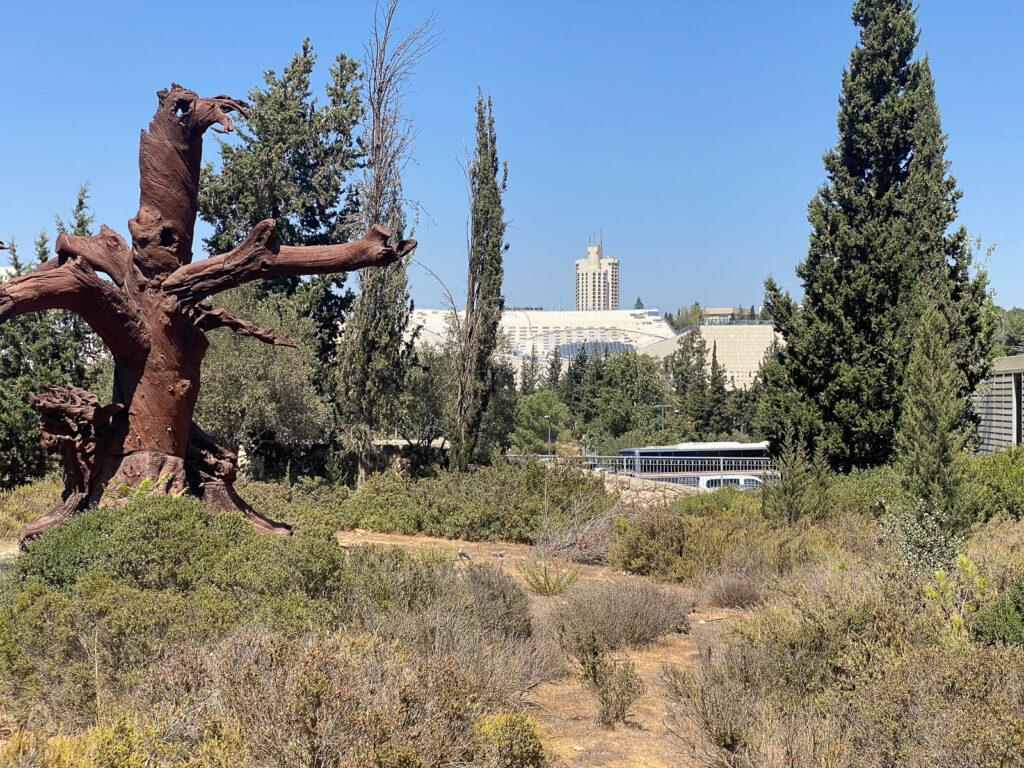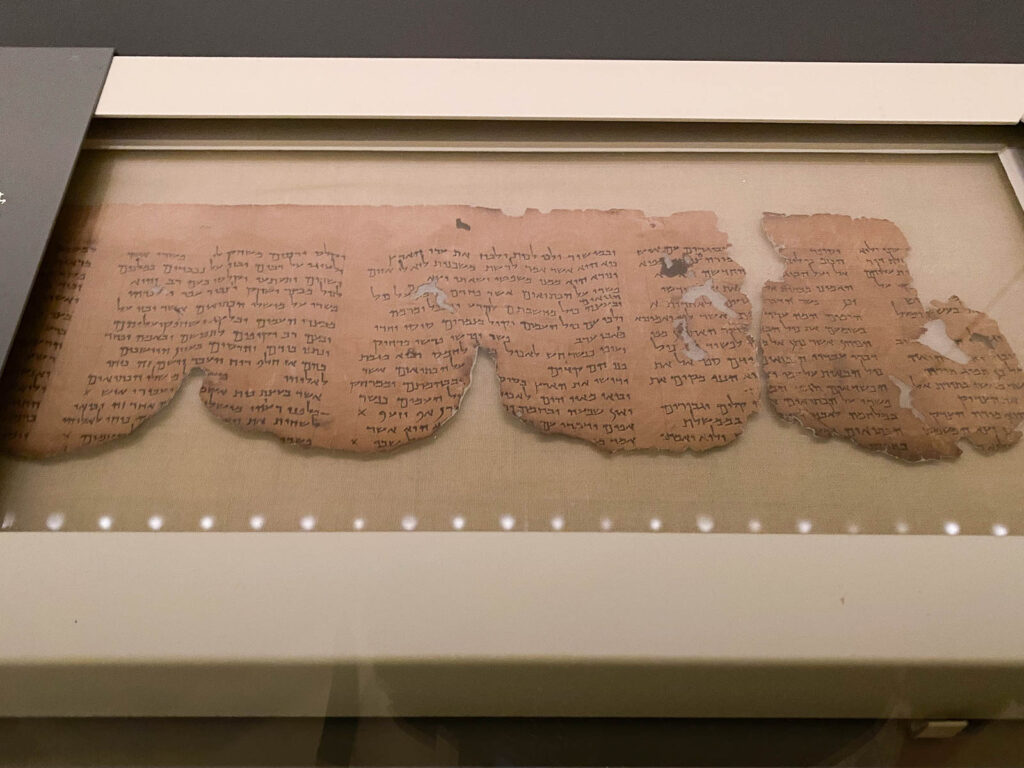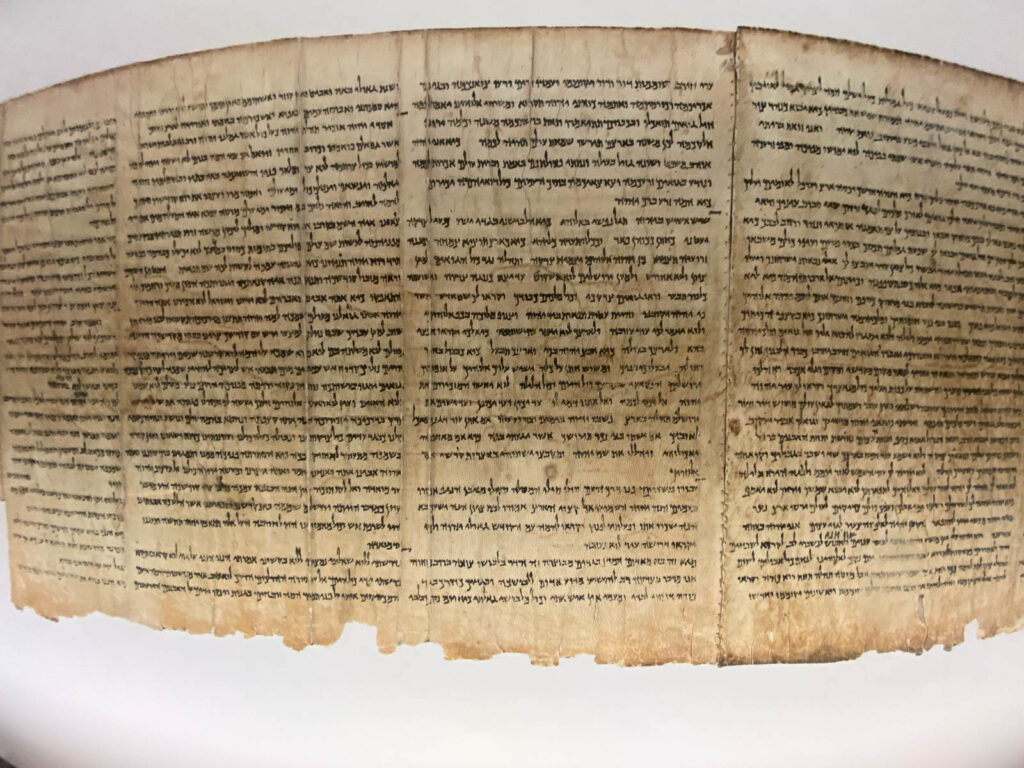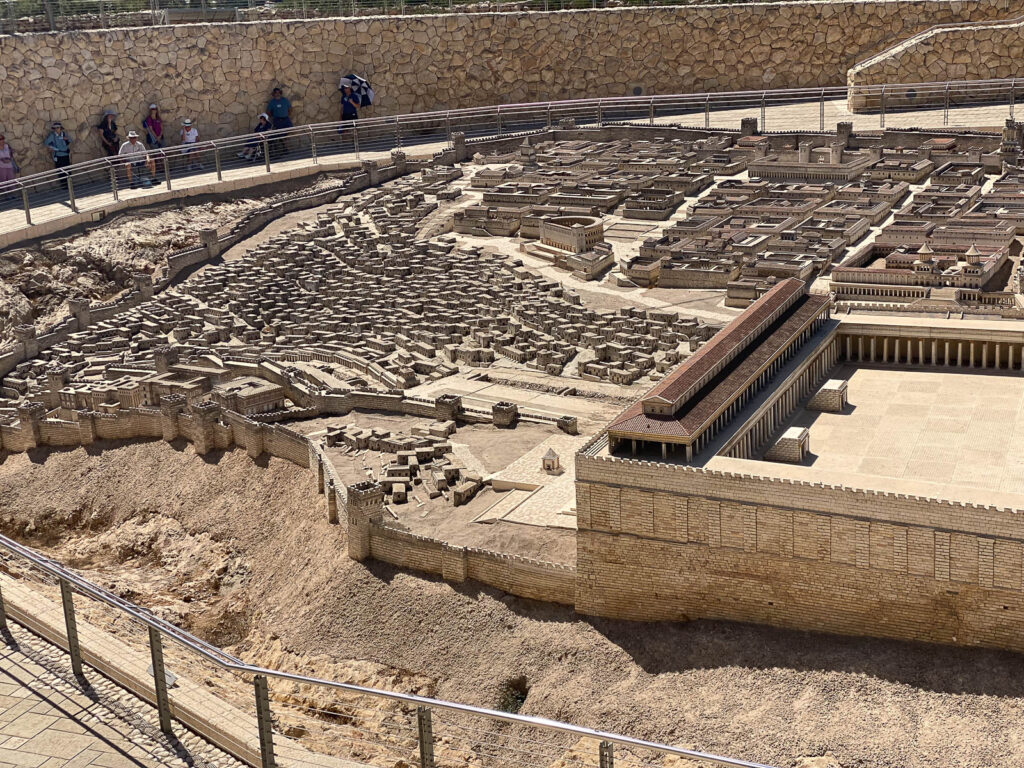Breakfast time came and we discovered that the Holocaust Museum, our first choice for today’s “free day”, was sold out for today. The Israeli Museum, 57 shekels versus free, gladly sold us tickets We procured two taxis and off we went, arriving at opening time of 10 AM.
We spent the first two-and-one-half hours in the Archeology section, organized chronologically from the earliest evidence of humankind 1.5 million years ago to roughly the Roman times two thousand years ago. There may have been more recent displays but if so, we missed them.
The displays of religious, farming and everyday implements were very comprehensive interesting and the accompanying descriptions quite good. I particularly like the Stone Age section and the Canaan period (end of the Bronze age around 1200 BCE). There was a section with artifacts from surrounding cultures that had influence on what went on in the Levant (Israel, Syria and Lebanon, give or take). Egypt and Mesopotamia (Iraq) were represented but no mention of my best bro from Egypt, Pharaoh Ramses II.
We made a pass at the Israeli Art department and completely bypassed the Contemporary Art area. Time was limited. This being Friday means the museum closed at 2 PM in preparation for Shabbat at sundown.
We did, however, visit the area that deals with the Dead Sea Scrolls. Fragments were on display, along with detailed descriptions of the Essences tribe that occupied a desert area about 25 miles east of Jerusalem. An ultra-conservative sect of Judaism, they created scrolls containing the books of the Torah and what we now call the Old Testament. They lived from 200 BCE to 100 CE, give or take. The scrolls are the oldest (almost) complete written record of the. Hebrew Bible in existence.
The Dead Sea Scrolls were discovered in 1947/48. The caves in which they were found were in what is now the Occupied Territories. Jordan controlled that area at the time and had control of most of the scrolls until the Six-Day-War. Most of them are now in Israel. Jordan and the Palestinian Authority still lay ownership claims. The scrolls have also generated great controversy among scholars whose oversized egos seem to be a big part of the problem.
There is another exhibit, collocated with the scrolls, displaying the Aleppo Codex. Until roughly 1000 CE, the books of the Hebrew Bible existed in numerous communities and handed down from generation on scrolls. Then, legend has it, in the sixth century the Ben-Asher family began compiling a complete collection – called a codex because they had figured out how to write on both sides of paper, rather than using scrolls. The process was completed in 980 CE. The Crusaders intervened and eventually the Codex ended up in Aleppo, Syria – hence the name Aleppo Codex. The Aleppo Synagogue was torched during an anti-Jewish riot in 1947. Part of the Codex was lost, either in the fire or by thieves. The remainder ended up in Israel.
In actuality, the Hebrew Bible was under development until the second century CE. And of course, the New Testament was largely written in that same timeframe.
By the time we left at 2 PM the coffee shop was down to ice cream bars. That and an apple will have to hold us until cocktail hour on our balcony at 5:30.
Cocktail hour was fun. Our balcony had lots of room for the six of us and it served as a very enjoyable party for my 75thbirthday, which is today.
Dinner is over and we’re off in the morning to the Old City of Jerusalem. Today’s visit to the museum was a good introduction.

